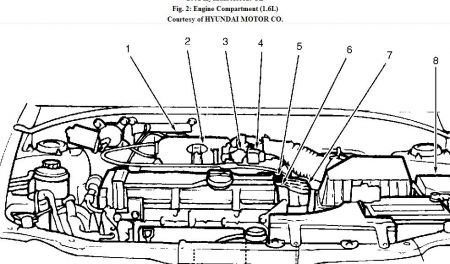Hi Raildog,
Thank you for the donation.
There is a purge solenoid for the EVAP system and it is item # 1 shown in the diagram. I could not find any diagrams to show you where the charcoal cannister and you have to follow the purge valve vacumn hose to it which should be located on or near the firewall.
I have included a description of the EVAP system for your understanding.

EVAPORATIVE & ORVR EMISSION (EVAP) CONTROL SYSTEM
The EVAP and on-board refueling vapor recovery (ORVR) system consists of a fill vent valve, fuel shut-off valve, fuel cut (roll-over) valve, fuel liquid/vapor separator, EVAP canister, EVAP canister purge solenoid valve, EVAP canister close valve, vacuum relief filler cap, and connecting lines and hoses. ORVR system is designed to prevent the release of fuel vapors during refueling. During refueling, as fuel enters the fuel tank, a vacuum is created in filler pipe, drawing air into the filler pipe and tank. Fuel vapor in fuel tank is then forced to the EVAP canister via the fill vent valve and the fuel liquid/vapor separator. A fuel tank pressure sensor is used for detecting EVAP system leaks by comparing pressures inside and outside of fuel tank.
EVAP Canister Purge Solenoid Valve
Fuel vapors are vented into the EVAP canister during refueling and when ignition is off. When engine is at normal operating temperature and engine speed is greater than idle, a thermovalve opens and allows vacuum to open the purge control valve. Canister vapors are then drawn into the intake manifold for burning during combustion. The purge control valve is kept closed during idle and engine warm-up to reduce HC and CO emissions.
SPONSORED LINKS
Sunday, February 8th, 2009 AT 4:02 AM

